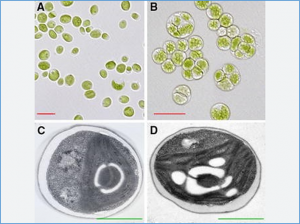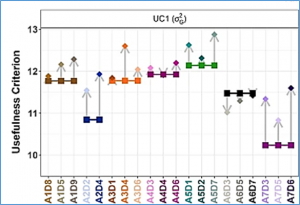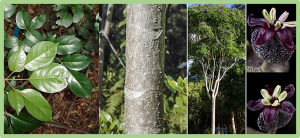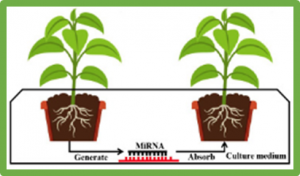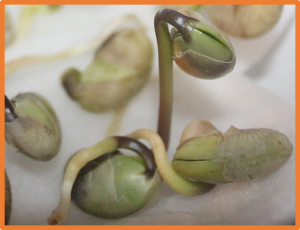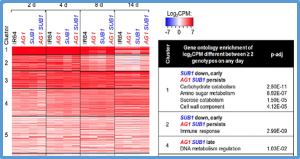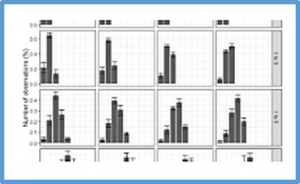Mining dwarf genes is important in understanding stem growth in crops. However, only a small number of dwarf genes have been cloned or characterized. Here, we characterized a cucumber (Cucumis sativus L.) dwarf mutant, super compact 3 (scp-3), which displays shortened internodes and dark green leaves with a wrinkled appearance. The photosynthetic rate of scp-3 is significantly lower than that of the wild type.
Biopesticides offer a sustainable and efficient alternative to synthetic pesticides, providing a safer and more eco-friendly solution to pest management. The present work proposes an innovative approach that integrates crop protection and wastewater treatment using thermophilic microalgal strain Chlorella thermophila (CT) cultivated in nutrient-rich dairy wastewater as a growth medium. The microalgae was cultivated mixotrophically and was able to reduce both organic carbon as well as nutrient load of the dairy wastewater efficiently.
Genetic diversity is crucial for maintaining genetic gains and ensuring breeding programs’ long-term success. In a closed breeding program, selection inevitably leads to a loss of genetic diversity. While managing diversity can delay this loss, introducing external sources of diversity is necessary to bring back favorable genetic variation. Genetic resources exhibit greater diversity than elite materials, but their lower performance levels hinder their use.
Heat stress interrupts physiological thermostability and triggers biochemical responses that are essential for plant survival. However, there is limited knowledge on the speed plants adjust to heat in hours and days, and which adjustments are crucial. Tropical-subtropical rainforest tree species (Polyscias elegans) were heated at 40°C for 5 d, before returning to 25°C for 13 d of recovery. Leaf heat tolerance was quantified using the temperature at which minimal chl a fluorescence sharply rose (Tcrit ). Tcrit , metabolites, heat shock protein (HSP) abundance and membrane lipid fatty acid (FA) composition were quantified. Tcrit increased by 4°C (48-52°C) within 2 h of 40°C exposure, along with rapid accumulation of metabolites and HSPs.
Potato genome database was used for genome-wide analysis of StPRMT and StHDMA gene families, which were further characterized by analyzing gene structure, conserved motif, domain organization, sub-cellular localization, promoter region and phylogenetic relationships. Additionally, expression profiling under high-temperature stress in leaf and stolon tissue of heat contrasting potato genotypes was done to study their role in response to high temperature stress.
MicroRNAs (miRNAs) are a class of non-coding single-stranded RNA molecules composed of approximately 20-24 nucleotides in plants. They play an important regulatory role in plant growth and development and as a signal in abiotic tolerance. Some abiotic stresses include drought, salt, cold, high temperature, heavy metals and nutritional elements. miRNAs affect gene expression by manipulating the cleavage, translational expression or DNA methylation of target messenger RNAs (mRNAs)
Rhizosphere microbiomes play an important role in enhancing plant salt tolerance and are also commonly employed as bio-inoculants in soil remediation processes. Cultivated soybean (Glycine max) is one of the major oilseed crops with moderate salt tolerance. However, the response of rhizosphere microbes me to salt stress in soybean, as well as their potential application in saline soil reclamation, has been rarely reported.
Crops with resilience to multiple climatic stresses are essential for increased yield stability. Here, we evaluate the interaction between two loci associated with flooding survival in rice (Oryza sativa L.). ANAEROBIC GERMINATION 1 (AG1), encoding TREHALOSE 6-PHOSPHATE PHOSPHATASE 7 (TPP7), promotes mobilization of endosperm reserves to enhance the elongation of a hollow coleoptile in seeds that are seeded directly into shallow paddies
Different soybean cultivars (Williams 82 , Union , Jindou 21 , Long Huang 1 , Long Huang 2 ) were exposed to drying soil, to investigate whether endogenous abscisic acid (ABA) concentrations and leaf water relations regulated stomatal behaviour. We measured ABA concentrations in xylem and tissue of the first and second trifoliate leaves respectively; stomatal conductance (gs ) and leaf water potential (Ψleaf ) in both leaves; and water content in soil.
Most genomic prediction methods are based on assumptions of normality due to their simplicity and ease of implementation. However, in plant and animal breeding, continuous traits are often visually scored as categorical traits and analyzed as a Gaussian variable, thus violating the normality assumption, which could affect the prediction of breeding values and the estimation of genetic parameters.


 Curently online :
Curently online :
 Total visitors :
Total visitors :

